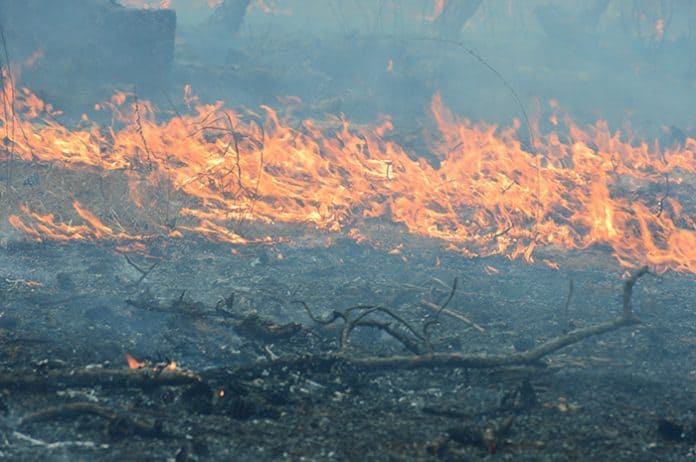
OCEAN COUNTY – Throughout the recent months and now into the early spring, the skies over Ocean County have been lined with grey ominous smoke. The smell of burnt wood and ash could be smelled for miles.
While this may concern many local residents, this is a very common procedure carried out by the New Jersey Forest Fire Service. They are performing what is commonly referred to as prescribed, controlled or planned burning. It is a process in which the fire commission apply fire to a predetermined area, under specific environmental conditions. This is done in part to help prevent the formation of a wildfire through controlled conditions, by burning off underbrush. Underbrush are the small shrubs and trees, along with grass and leaves, that form within the undergrowth in a forest. These act as the kindling and “fuel” of the fire. Limiting this “fuel” greatly limits the chance of wildfire spreading. This also greatly reduces the intensity of possible fires and allows for effective fire suppression and protection.
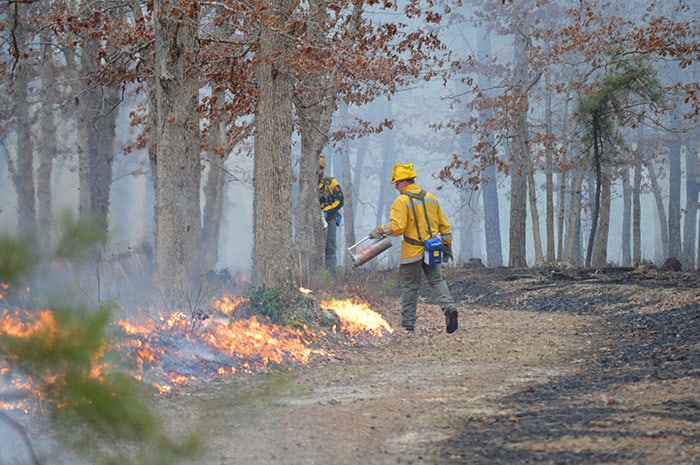
Prescribed burns are used commonly on public lands in order to improve forest health, and reduce larger wildfires, according to the Forest Fire Service. These burns are both effective economically as well as safety wise for local residents. They also allow for forest disease and pest control as well as an overall improvement of land. These burns are carried out all throughout the state and country. Most recently, Cloverdale in Barnegat, Wells Mills in Waretown and sections of Manchester have had these burns carried out. These burns will continue to take place through the end of March.
The New Jersey Forest Fire Service (NJFFS) is a division of the New Jersey Department of Environmental Protection within the New Jersey Division of Parks and Forestry. The Service is under the direction of the state fire warden and by their staffed headquarters in Trenton. It was originally founded in 1906 with their primary focus being on wildland fire suppression and protection in New Jersey. The Forest Fire Service is currently one of the largest firefighting departments in the state of New Jersey, covering well over 3.15 million acres of both private and public land statewide. The service is staff by 85 full-time employees and a very large part-time force, providing both protection and wildfire management.
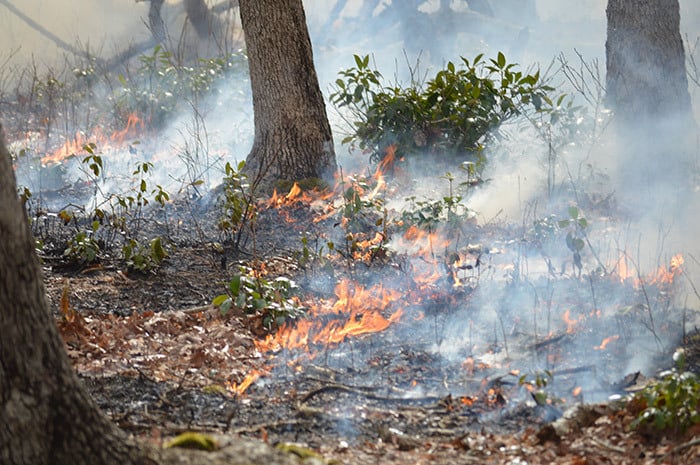
“Since 1906, the Forest Fire Service has protected property, lives and infrastructure by creating defensible space and strategic fire breaks near developed areas,” said Greg McLaughlin, Acting Chief of the New Jersey Forest Fire Service.
The prescribed burns are performed in order to help prevent the start and spreading of wildfire. They most commonly take place between the months of October and March. These burns make it much easier for later prevention and fire suppression, as they greatly reduce the risk well before the prime of the wildfire season. The season typically begins in the early spring when the fallen leaves, branches and twigs are in abundance. Springtime in our area is commonly dry, windy and warm. With limited new foliage growth and an abundance of dry underbrush and viable fuel, forest fires around this time tend to form and spread much faster. The Pine Barrens and Pinelands region of southern New Jersey is probably one of the most susceptible regions to forest fires due to its regional fire dependent ecosystem. The region is dependent on these wildfires for the releasing of seeds for reproduction. Controlling the buildup of fuel in the region is beneficial to the forests health.
Each year the Forest Fire Service responds to well over 1,000 wildfires all throughout New Jersey. A good amount of these fires threaten local home, business and wildlife all throughout the Pine Barrens, coastal marshes and New Jersey mountains. These fires involve hundreds of firefighters, both staffed and volunteer as well as many pieces of equipment.
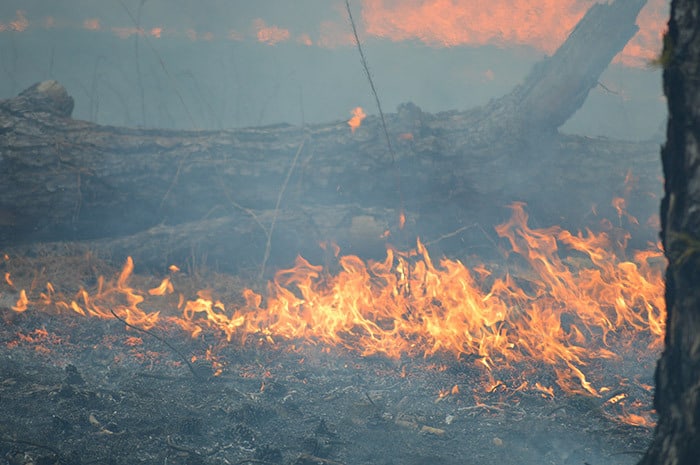
The Forest Fire Service has the state of New Jersey split up in three main divisions. These divisions focus primarily on portions on north, central and south New Jersey. They are labeled as divisions A, B and C. (Ocean County falls under the central New Jersey division, or B division.) These larger divisions are then broken down into smaller more localized divisions. A district forest fire warden is then placed in charge of one of the divisions and is responsible for recruiting and training fire crews and the issuing of burning permits. There are 269 district forest fire wardens statewide with more than 2,000 trained crewmen under them working on an hourly basis.
In 2016, the Forest Fire Service responded to 1,065 wildfires, 75 percent of which were a quarter-acre or smaller. The largest was a 464-acre fire in Bass River State Forest in Burlington County.
In 2017, the Forest Fire Service responded to 753 wildfires, 74 percent of which were a quarter acre or smaller. The largest was a 3,477-acre fire in Wharton State Forest, Burlington County.
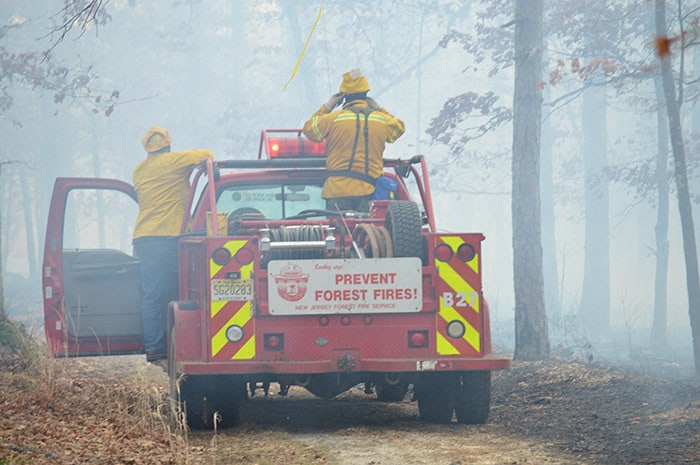
As for 2018, the Forest Fire Service plans to have prescribed burns on approximately 30,000 acres of state-owned property and land. The includes state forests, parks and wildlife management areas, as well as other government lands. They are also planning on providing general assistance to private landowners and nonprofit organizations to help mitigate the wildfire risk.
Barnegat township was the first township in New Jersey to have a Forest Fire Council as a town municipality. Woodland, Waterford and Manchester are also jumped on board, following the footsteps set out by Barnegat. Bill Brash, the man responsible for birthing this program in New Jersey, came up with the idea for such a council through the inspiration by a very similar concept adopted by the state of California. The Barnegat council adopted a lot of the same ideals and inter-workings similar to the program in California. The general premise behind it is to keep residents well informed and safe during a wildfire. The New Jersey Fire Safe Council helps with aid and the bringing in of grant funding as well as outreach and mitigation alongside the Forest Fire Service.
If you are curious and would like to be regularly updated about the Forest Fire Service and their efforts you can sign up for their text or email notifications by visiting: https://public.govdelivery.com/accounts/NJDEP/subscriber/new. The New Jersey Division of Parks and Forestry also provides notice through its Facebook page: www.facebook.com/newjerseyforests.






